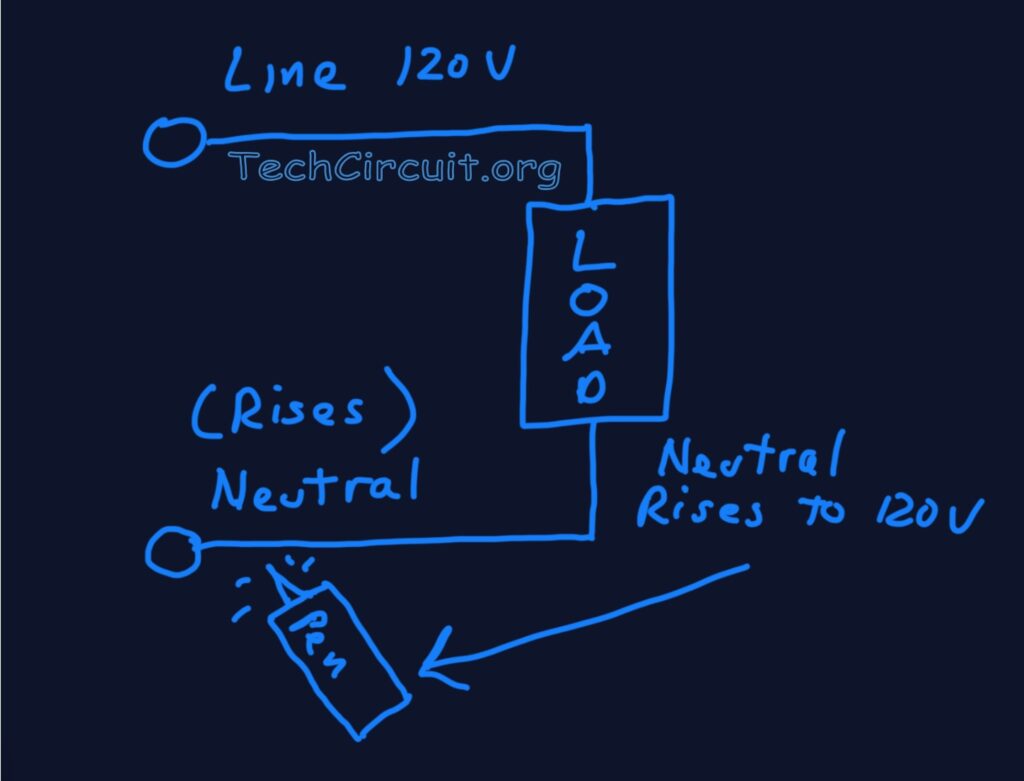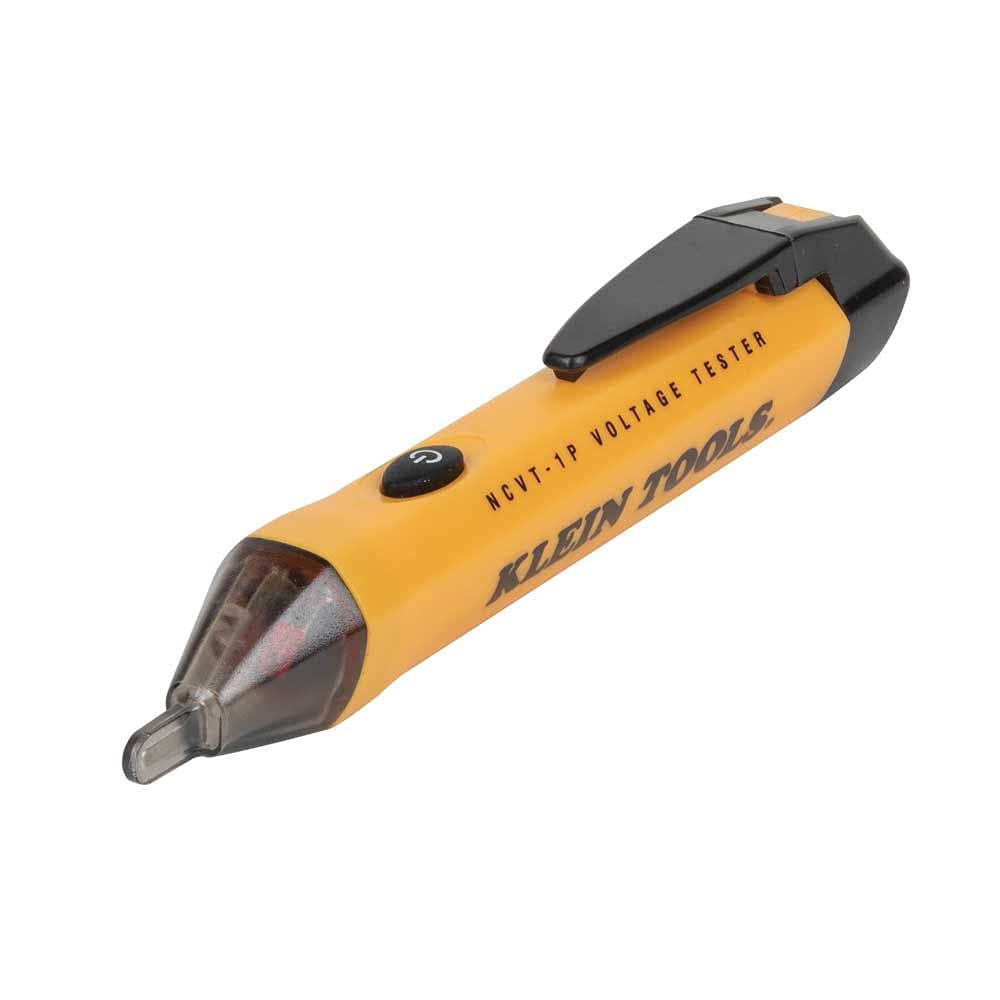
The title says it all. A voltage pen can be much handier than some Technicians realize. Yes, they can be easily used to locate an open or loose (compromised) neutral in in a voltage source. THIS BLOG IS INTENDED FOR APPLIANCE TECHNICIANS ONLY. ALWAYS USE APPROPRIATE SAFETY PRECAUTIONS WHEN WORKING WITH ELECTRICITY.
About Neutral
Neutral, in single split phase electrical service (such as common residential service) is the return path for Line voltage (120VAC) and is the center tap of the step-down transformer for that residential service. It should be at zero volts potential as compared to Earth ground. In fact, it is bonded to Earth ground at the breaker panel.
What is an Open or Loose Neutral?
A compromised neutral has either no connection or a loose connection somewhere between the load and the center tap of the residential step-down transformer. Whenever Neutral is open or loose, it is no longer a solid return path for L1. In fact, when a load is connected between Line voltage and a loose or open Neutral, that Neutral will rise toward the potential of Line voltage. Thus, Neutral often approaches 120v potential with respect to ground, as it it “pulled” toward Line voltage by the load. The lower the impedance of the load, the more “pull” that exists and the more likely the loose Neutral will assume a 120v potential.
The Voltage Pen
A voltage pen or NCV (Non-contact Voltage) pen detects the presence of Line voltage or any AC voltage greater than 50VAC will trigger a Klein NCVT-1P voltage pen. The person holding the voltage pen is assumed to be at Earth ground potential (0V) and is the reference point for that pen. Thus when the pen detects an AC voltage greater than 50V w/r to the person holding the pen, it will trigger. Below is a recommended voltage pen for this purpose. CLICK HERE OR CLICK THE IMAGE TO PURCHASE:

How to use a Voltage Pen for Detecting a Loose or Open Neutral
Testing for a compromised neutral with a voltage pen is a dynamic testing scenario. In other words it normally takes a load to pull neutral towards line voltage when neutral is either open or has a loose upstream connection. As you may have guessed, a voltage pen puts no load on the circuit under test. Thus a voltage pen should be used to detect a loose neutral while the load of interest (refrigerator, washing machine, toaster) is placed on the circuit and is live. When testing for a loose neutral, place of voltage pen at the point where Neutral is suspected to be rising when under load. This point can be the can even use the neutral slot of the electrical outlet (large slot on left). If the Neutral rises above 50V, the pen will trigger.
An example is with a refrigerator completely shuts down (lights and all), when the compressor tries to start, or a toaster that doesn’t work, but the outlet reads 120v with a standard voltmeter. The neutral should be monitored with the voltage pen when the load is activated (like when a compressor tries to start on a refrigerator). If Neutral is loose upstream of the refrigerator outlet, the voltage pen will likely trigger when the load kicks in.
Why a Voltage Pen is Ideal for Detecting Neutral Issues
It’s Just Logical
Logically speaking, Neutral should be at 0V potential and will not trigger a voltage pen if it is at Earth ground potential. Thus, when Neutral is “pulled” to line potential by the load, the voltage pen will detect “Line” at Neutral, and will trigger.
Ease of Use
The voltage pen requires no bare connections to test, and only requires one point, as opposed to a volt-meter, which requires the test point and a reference.
Safety
Since you only need to test one point at a time, you can do so with one hand behind your back, and thus not provide an anatomical electrical path from arm to arm (or arm to anywhere else for that matter). Equally, the voltage pen largely insulates you from the point you are testing. Thus live-circuit voltage pen diagnostics is safer than point-to-point diagnostics with a voltmeter.
Conclusion
Using a voltage pen to test for an open or loose Neutral is a logical, easy, and safe way to test for a faulty Neutral. It will be accurate in most cases where Neutral is loose to the extent that it adversely affect the load’s normal operation. The load could be an appliance, a light, or anything that requires 120v to operate. The voltage pen will trigger when it reads Line voltage, which is what Neutral will seek if it is compromised and thus being pulled toward Line potential. Note that Neutral may not always be pulled above the 50v level w/r to Earth ground, so a multimeter can be used to ultimately confirm its status. However, most loose connections in high current circuits are unsustainable, and lead to complete failure in a very short time – meaning that with upstream loose connections on Neutral in high current circuits, Neutral will have a strong potential to attain 120v when under load. CLICK HERE TO LEARN MORE ABOUT THE INSUSTAINABILITY OF LOOSE CONNECTIONS IN HIGH CURRENT CIRCUITS.
Don’t forget:
“Diverting 10 min/day of social media time towards learning something new, is 5 hours of newfound monthly knowledge.” – SM
To DONATE to the Tech Circuit – CLICK HERE
Alphabetical Links to all Tech Circuit Articles and Blogs – CLICK HERE
Links to all Tech Circuit Cheat Sheets/Field References for Appliance/HVAC Techs – CLICK HERE
For additional electrical and electronics learning material for field techs, visit the following links:
Homepage at http://www.TechCircuit.org
Facebook group at: https://www.facebook.com/groups/746823709133603
Youtube Channel: https://www.youtube.com/@TheTechCircuit
We are a participant in the Amazon Services LLC Associates Program, an affiliate advertising program designed to provide a means for us to earn fees by linking to Amazon.com and affiliated sites.
